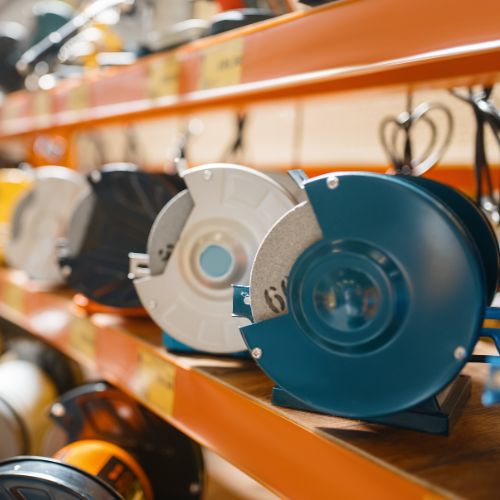
When you want more control over your assets you need to use a hardware asset register. The register will enable you to see where every single tool is all of the time.
There are additional benefits to using an asset register. You could, for example, learn how often a tool is used and even when it needs to be repaired. But before we delve deep into the benefits, we need to look at how an inventory is created.
Consider Where You’re Going To Start
You may have plans to add almost everything, if not everything to your new hardware asset register. Perhaps you’ve decided to add some specific tools, for example, first and then work on the rest. This, however, could be a bad idea. There’s always a chance that you’re going to miss something or even attempt to add multiple tools twice.
The best thing that you can do is to begin in a specific room or part of your shop floor and then move to another area. When you work this way, you’re much more likely to add those all-important tools, equipment, and anything else.

Affix A Barcode To The Assets You Wish To Track
Before you create an asset register, you need to affix a barcode to an asset. Do this one asset at a time so you know what you’ve scanned and what you haven’t. Place the barcode or RFID tag in an area where it’s not going to get in the way or sustain damage. Once the barcode has been affixed, it’s time to scan it. Scanning the barcode will result in a profile popping up on your device.
Populate Every Digital Profile
When you’re creating your new hardware asset register it’s important that you populate every profile. You need to add a little information about the asset you’ve just scanned. This information can prove very useful at some point in the future.
Add information such as the asset’s make and model, serial number, insurance and warranty information, and anything else that you think is relevant. Adding a link to or a copy of the instruction manual could be useful. It may also be helpful for you to attach a photograph of the asset so you can easily identify it.
Begin Tracking Your Hardware
Once you have added the relevant information and saved your profile, it’s time to begin tracking your hardware. This feature is one of the reasons why using a hardware asset register is so popular. You can see where all of your hardware is all day, every single day. What this means is you can save time searching for something or even make sure it’s in the right location.
Tracking your assets not only shows you where things are located, but it also helps to keep everything a little safer. Consequently, fewer assets may go missing or become damaged.
Start Creating Useful Data
As soon as you have created a profile and added it to your hardware asset register it will start to create data. This data could prove to be very useful as it can show you how often and when your assets are used. You could see whether you have enough tools for everyone or whether something needs to be repaired.
When you have access to data such as this, there is the potential for you to understand your business a little better. The data that’s created will show you exactly how your business is running from a different perspective. It’s this perspective that could prove to be useful. When you can see how your business is performing, there’s always the chance that you could make improvements. These could be improvements that you may not have been able to make otherwise.
Take Care Of Your Assets
We all want to take good care of our assets but it isn’t always easy. However, when you use an asset register, you can make it easier than you think. While you’re adding important information to a profile, consider adding a maintenance reminder. When you do, and your maintenance team receives the notifications, they’ll know what needs to be checked out. As a result, all of your assets could be in much better condition.
Have More Control Over Your Hardware
Did you know that when you use a hardware asset register you automatically have more control over your assets? Depending on the type of software you use, you could limit access to specific tools and equipment. You could also ensure that tools are checked in and out all of the time. These features can help you to track your hardware and limit its use, should you wish to.
Would you like to speak with an expert about a hardware asset register? Contact us today at team@itemit.com.

Try itemit
Choose a better way to track
your assets.
Start your free 14-day trial now!

Keep Learning
itemit Blog
Tips, guides, industry best practices, and news.
The Ultimate Guide to RFID Inventory Management
Discover the beginner’s guide to RFID inventory management technology. Learn how to improve accuracy, streamline stock tracking, and boost efficiency today!
A Guide to the Different Types of Inventory Management
Discover the different types of inventory management systems and how each can improve efficiency and accuracy in managing your business inventory.
Understanding the Inventory Tracking Process and Its Importance
Learn about the inventory tracking process and its importance. Discover how it helps improve efficiency, accuracy, and overall business management.


